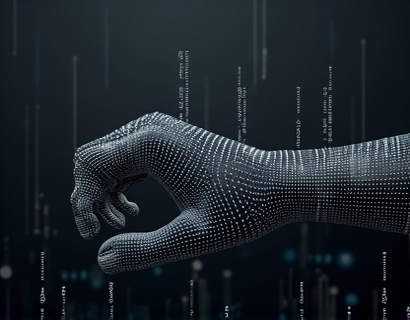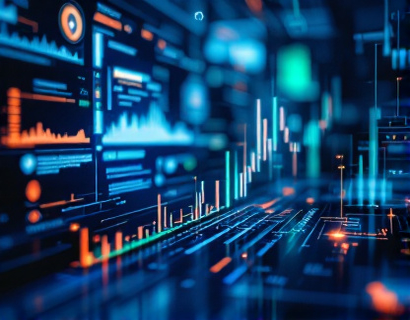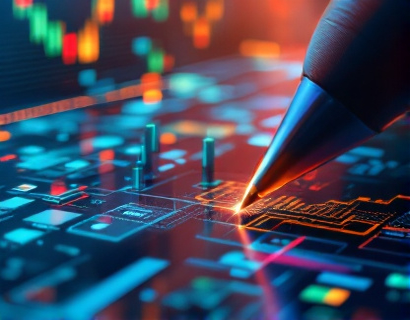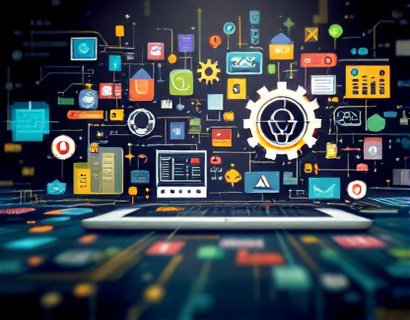Revolutionizing Digital Experiences: The Synergy of Crypto and AI
The intersection of cryptocurrency and artificial intelligence is giving rise to a new era of digital transformation, one that promises to redefine how we interact with online platforms and services. For tech innovators and early adopters, this convergence offers unprecedented opportunities to enhance their digital presence and experience. This article delves into the cutting-edge tools and services that harness the power of these technologies, providing insights into the future of digital innovation.
The integration of AI with blockchain technology is not just a novel concept but a practical approach to creating more efficient, secure, and user-friendly digital solutions. AI's ability to process vast amounts of data and learn from patterns makes it an ideal companion for the decentralized and transparent nature of cryptocurrencies. Together, they are paving the way for next-generation applications that are transforming the digital landscape.
Enhanced Security Through AI and Crypto
One of the most significant benefits of combining AI with cryptocurrency is the enhancement of security measures. Traditional online systems often struggle with vulnerabilities and breaches, but AI-driven solutions can predict and mitigate threats more effectively. Machine learning algorithms can analyze patterns in transaction data to identify suspicious activities in real-time, providing a robust defense against cyber threats.
Blockchain's inherent security features, such as immutability and decentralization, are further strengthened by AI. Smart contracts, for instance, can be programmed with AI algorithms to automatically enforce and execute contractual obligations based on predefined conditions. This not only reduces the risk of fraud but also streamlines processes, making transactions faster and more reliable.
Personalized User Experiences
AI's strength lies in its ability to personalize experiences based on individual preferences and behaviors. When applied to cryptocurrency and blockchain-based services, this personalization can significantly enhance user engagement and satisfaction. For example, AI can analyze a user's transaction history and preferences to recommend tailored investment strategies or suggest relevant blockchain-based services.
Ucosystem apps and services powered by AI and crypto can offer a seamless and intuitive user experience. By leveraging natural language processing and machine learning, these platforms can understand user intent and provide context-aware recommendations. This level of personalization not only improves user satisfaction but also fosters a stronger connection between users and the digital services they use.
Optimized Network Performance
The performance of blockchain networks is crucial for their adoption and scalability. AI can play a pivotal role in optimizing network operations, ensuring smooth and efficient transactions. By analyzing network data, AI algorithms can identify bottlenecks and propose solutions to improve throughput and reduce latency.
For instance, AI can dynamically adjust consensus mechanisms based on network conditions, ensuring that the blockchain remains secure and efficient. This adaptive approach is particularly important for public blockchains that handle a high volume of transactions. By maintaining optimal performance, these networks can support a wider range of applications, from decentralized finance to supply chain management.
Innovative Financial Solutions
The combination of AI and cryptocurrency is revolutionizing the financial sector, giving birth to innovative solutions that were previously unimaginable. Decentralized finance (DeFi) platforms, for example, leverage AI to create more sophisticated and accessible financial products. AI-driven algorithms can analyze market trends and user behavior to develop customizable lending and borrowing options, peer-to-peer trading, and automated investment strategies.
AI also enhances the risk management capabilities of these platforms. By continuously monitoring market conditions and user activities, AI can provide real-time insights and alerts, helping users make informed decisions. This level of sophistication is particularly valuable in the volatile world of cryptocurrencies, where timely information can mean the difference between profit and loss.
Supply Chain Transparency and Efficiency
Beyond finance, the synergy of AI and cryptocurrency is transforming supply chain management. Blockchain's transparency and AI's analytical capabilities come together to create a more efficient and trustworthy supply chain ecosystem. Each step in the supply chain, from production to delivery, can be recorded on a blockchain, ensuring that all transactions are verifiable and tamper-proof.
AI can process this data to identify inefficiencies, predict delays, and optimize logistics. For example, machine learning models can analyze historical data to forecast demand and adjust inventory levels accordingly. Smart contracts can automate payments and ensure that all parties fulfill their obligations, reducing the need for intermediaries and lowering costs.
Enhanced Identity Verification
Identity verification is a critical aspect of digital transactions, and the combination of AI and cryptocurrency offers robust solutions. Traditional identity verification methods are often cumbersome and susceptible to fraud. AI-powered blockchain solutions can provide a secure and efficient way to verify identities.
Self-sovereign identity (SSI) systems, for instance, allow individuals to control their personal data and share it selectively with service providers. AI algorithms can analyze and verify the authenticity of identity documents, reducing the risk of fraud. This not only enhances security but also empowers users by giving them more control over their personal information.
Smart Cities and IoT Integration
The integration of AI and cryptocurrency is not limited to digital services; it is also transforming how cities operate. Smart city initiatives can leverage blockchain for secure and transparent data management, while AI can optimize various city functions, from traffic management to energy distribution. Cryptocurrencies can serve as a medium of exchange for transactions within these systems, ensuring efficiency and reducing transaction costs.
For example, AI can analyze traffic patterns and adjust signal timings in real-time to reduce congestion. Blockchain can record these transactions, ensuring that all data is immutable and transparent. Cryptocurrencies can facilitate payments between different city services, creating a seamless and efficient urban ecosystem.
Challenges and Considerations
While the potential of AI and cryptocurrency is vast, there are challenges that need to be addressed. Regulatory frameworks are still evolving, and the lack of clear guidelines can hinder adoption. Additionally, the technical complexity of these technologies can be a barrier for some users and businesses.
Education and awareness are crucial in overcoming these challenges. Providing resources and support to help users understand and adopt these technologies can accelerate their integration into mainstream applications. Collaboration between regulators, developers, and users is essential to create a conducive environment for innovation.
Conclusion
The merging of AI and cryptocurrency is not just a technological trend but a transformative force that is reshaping the digital world. For tech innovators and early adopters, this synergy offers a wealth of opportunities to enhance their digital experiences and stay ahead of the curve. As these technologies continue to evolve, the possibilities for innovation and growth are endless, promising a future where digital interactions are more secure, personalized, and efficient.











































